Included:
Learning Machine Learning from scratch, hardware options, finding
mentorship, who’s important to know in the field, freelancing as a
machine learning engineer, concepts that make you difficult to replace,
preparing for interviews, interviewing with big silicon valley tech
companies, adopting the best productivity habits, and a few other
things.
Credentials:
I graduated with a degree in molecular biology and worked in biotech
after college. Within a year of leaving that industry, I was working
with the Tensorflow team at Google on probabilistic programming tools. I
later joined a security startup as a machine learning engineer.
Disclaimer:
Much of this is based on my own experience, peppered with insights from
friends of mine who have been in similar boats. Your experience might
not be identical. The main value is giving you a roadmap of the space so
you can navigate it if you have no idea what you’re doing. If you have
your own methods for learning ML that are working better than the ones
listed here (like, if you’re literally in school learning about this
stuff), keep on using them.
In
a span of about one year year, I went from quitting biomedical research
to becoming a paid Machine Learning Engineer, all without having a
degree in CS or Math. I’ve worked on side-projects that have been shared
with tens of thousands on Twitter, worked with startups in facial
recognition and distributed apps, sold a side-project, and even worked
with Google’s Tensorflow Team on new additions to Tensorflow. Again,
this was all without having a computer science degree.
This
post, while long, is a compilation of all the important concepts, tips,
and resources for getting into a machine learning career. From readers
who are not yet in College, to readers who have been out of college for a
while and are looking to make a switch, I’ve tried to distil the most
generally applicable points from my own journey that would be beneficial
to a wide array of people.
Enjoy.
Part 1: Introductions, Motivations, and Roadmap
Part 2: Skills of a (Marketable) Machine Learning Engineer
Part 3: Immersion and Finding Mentors
Part 4: Software and Hardware Resources
Part 5: Reading Research Papers (and a few that everyone should know)
Part 6: Groups and People you should be Familiar with
Part 7: Problem-Solving Approaches and Workflows
Part 8: Building your portfolio
Part 9: Freelancing as an ML developer
Part 10: Interviewing for Full-time Machine Learning Engineer Positions
Part 11: Career trajectory and future steps
Part 12: Habits for Improved Productivity & Learning
Part 1: Introductions, Motivations, and Roadmap
Introductions
If you’ve been following the news at all, chances are you’ve seen the headlines about how much demand there is for machine learning talent. In the recent LinkedIn Economic Graph
report, “Machine Learning Engineer” and “Data Scientist” were the two
fastest growing jobs of 2018 (9.8x and 6.5x growth, respectively).
Medium itself is rife with example projects, tutorials, reviews of software, and tales of interesting applications.
Despite the apparent demand, there seem to be few resources on actually
entering this field as an outsider, as compared the resources available
for other areas of software engineering. That’s why I’m writing this
mega-post: to serve as condensed resource for the lessons of my journey
to becoming a Machine Learning Engineer from a non-CS background.
“But Matt”, you must be saying, “That’s not at all unusual, lots of people go into machine learning from other fields.”
It’s
true that many non-CS majors go into the field. However, I was not a
declared statistics, mathematics, physics, or electrical engineering
major in college. My background is in molecular biology, which some of
you may have noticed is frequently omitted from lists of examples of
STEM fields.
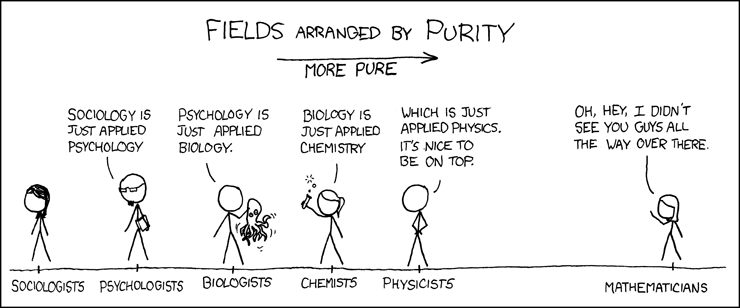
While
I was slightly more focused on statistics and programming during my
undergrad than most bio majors, this is still an unusual path compared
to a physicist entering the field (as this lovely post from Nathan Yau’s FlowingData illustrates).
Backstory
I
don’t think it’s wise to focus too much on narratives (outside of
preparing for interviews, which we will get to). There’s many ways I
could spin a narrative for my first steps into the machine learning
field, both heroic and anti-heroic, so here’s one of the more common
ones I use:
Since
high school, I had an almost single-minded obsession with diseases of
aging. A lot of my introduction to machine learning was during my
undergraduate research in this area. This was in a lab that was fitting
discrete fruit fly death data to continuous equations like gompertz and
weibull distributions, as well as using image-tracking to measure the
amounts of physical activity of said fruit flies. Outside of this
research, I was working on projects like a Google Scholar scraper to
expedite the search for papers for literature reviews. Machine learning
seemed like just another useful tool at the time for applying to
biomedical research. Like everyone else, I eventually realized that this
was going to become much bigger, an integral technology of everyday
life in the coming decade. I knew I had to get serious about becoming as
skilled as I could in this area.
But why switch away from aging completely?
To answer that, I’d like to bring up a presentation I saw by Dr. David
Sinclair from Harvard Medical School. Before getting to talking about
his lab’s exciting research developments, he described a common struggle
in the field of aging. Many labs are focused on narrow aspects of the
process, whether it be specific enzyme activity, nutrient signalling,
genetic changes, or any of the other countless areas. Dr. Sinclair
brought up the analogy of the blind men and the elephant, with respect
to many researchers looking at narrow aspects of aging, without spending
as much time recognizing how different the whole is from the part. I
felt like the reality was slightly different (that it was more like
sighted people trying identify an elephant in the dark while using laser
pointers instead of flashlights), but the conclusion was still spot-on:
we need better tools and approaches to addressing problems like aging.

This,
along with several other factors, made me realize that using the
wet-lab approach to the biological sciences alone was incredibly
inefficient. Much of the low-hanging fruit in the search space of cures
and treatments has been acquired long ago. The challenges that remain
encompass diseases and conditions that might require troves of data to
even diagnose, let alone treat (e.g., genomically diverse cancers,
rapidly mutating viruses like HIV). Yes, I agree with many others that aging is definitely a disease, but it is also a nebulously defined one that affects people in wildly varying ways.
I
decided that if I was going to make a large contribution to this, or
any other field I decided to go into, the most productive approach would
be working on the tools for augmenting and automating data analysis. At
least for the near future, I had to focus on making sure my foundation
in Machine Learning was solid before I could return my focus to specific
cases like aging.
“So…what exactly is this long-a** post about again?”
There
are plenty of listicles and video tutorials for specific machine
learning techniques, but there isn’t quite the same level of
career-guide-style support like there is for web or mobile developers.
That’s why this is more than just compiling lists of resources I have
turned to for studying. I also tried to document the best practices I’ve
found for creating portfolio projects, finding both short-term and
long-term work in the field, and keeping up with the rapidly-changing
research landscape. I will also compile nuggets of wisdom from others I
have interviewed who are further along this path than I am.
The level of technical ability you need to show is not lowered, it’s even higher when you don’t have the educational background, but it’s totally possible.
— Dario Amodei, PhD, Researcher at OpenAI, on entering the field without a doctorate in machine learning
Ultimately,
I want whoever reads this to get a detailed map of the space, so if
they decide to go down my path, they can get through the valley of the
Dunning-Kruger effect much more quickly.
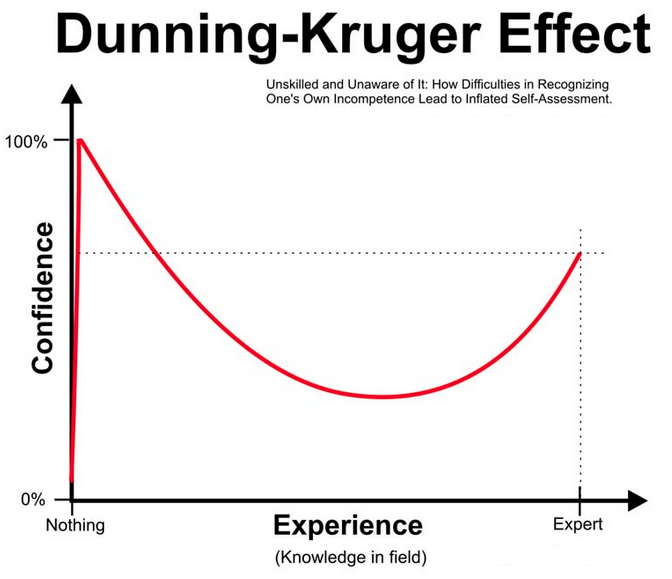
With
that in mind, we’ll start with a rough overview of the skills needed to
master in order to become an (employable) machine learning engineer:
Part 2: Skills of a (Marketable) Machine Learning Engineer
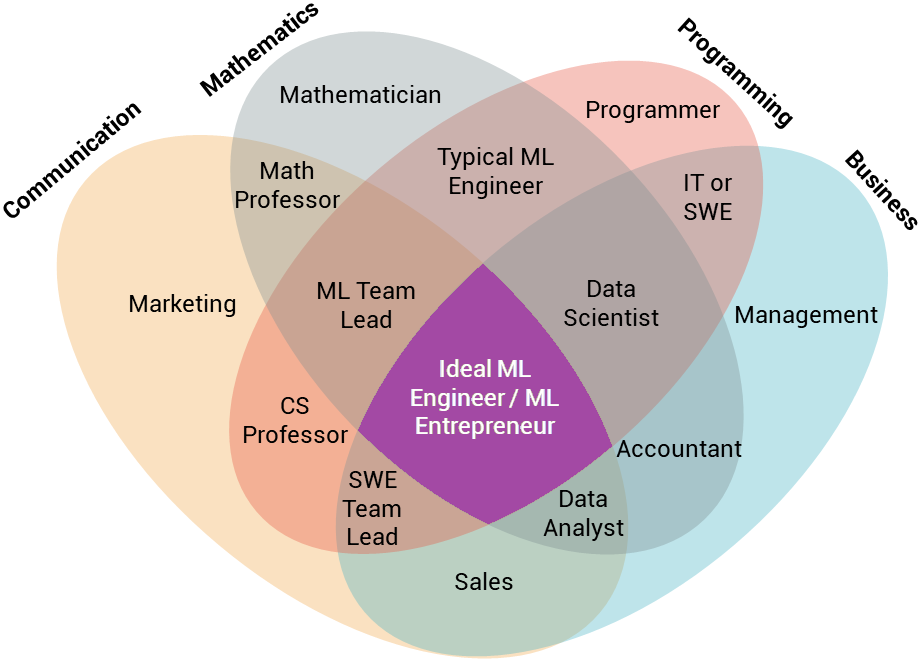
Becoming
a machine learning engineer still isn’t quite as straightforward as
becoming a web or mobile engineer, as we discussed in the
previous section. This is despite all of the new programs geared toward
machine learning both inside and outside of traditional schools. If you
ask many people with the title of “Machine Learning Engineer” what they
do, you’ll often get wildly different answers.
The goal of this section is to help you put together the beginnings of a mental semantic tree (Khan Academy’s example of such a tree) for learning machine learning (à la Elon Musk’s now famous method).
Based on my own experiences, as well as reaching out to hundreds of
machine learning engineers in both academia and industry, here’s an
overview of the soft skills, basic technical skills, and more
specialized skills you’ll need.
Soft Skills
We
need to cover a few non-technical skills that you should keep in mind
before diving into the deep end. Yes, machine learning is mainly math
and computer science knowledge. However, you’ll most likely need to find
ways of applying this to solve real problems.
Learning new skills:
The field is rapidly changing. Every month new neural network models
come out that outperform previous architecture. GPU-manufacturers are in
an arms race. 2017 saw just about every major tech giant release their own machine learning frameworks.
There’s a lot to keep up with, but luckily the ability to quickly learn
things is something you can improve on (Growth mindsets for the win!).
Classes like Coursera Learning how to Learn are great for this. If you have Dyslexia, ADD, or anything similar, the Speechify app
can offer a bit of a productivity boost (this is one app that I used a
bunch to make as much use of my time reading and re-reading papers).
Muad’Dib learned rapidly because his first training was in how to learn. And the first lesson of all was the basic trust that he could learn. It’s shocking to find how many people do not believe they can learn, and how many more believe learning to be difficult. Muad’Dib knew that every experience carries its lesson.
- Dune, by Frank Herbert
Time-management: A lot of my friends have gone to Ivy League schools like Brown, Harvard, and MIT. Out
of the ones that made it there and continued to succeed afterwards, it
seemed that skill in time management was a much bigger factor in their
success than any natural talent or innate intellect. The same pattern
will likely apply to you. When it comes to a cognitively-demanding
task like learning machine learning, RESIST THE URGE TO MULTI-TASK. Yes,
at some point you may need to run model-trainings in parallel if you
have the compute resources, but you should put your phone on airplane
mode when studying and avoid doing multiple tasks at the same time. I
cannot recommend highly enough Cal Newport’s book “Deep Work” (or his Study Hacks Blog). If you’re still in college or high school, Jessica Pointing’s Optimize Guide is also a great resource. I’ll go into more resources like this in the next post in this series.
Business/Domain knowledge:
The most successful machine learning projects out there are going to be
those that address real pain points. It will be up to you to make sure
your project is not the machine learning equivalent of Juicero.
In academia, the emphasis is more on the side of improving metrics of
algorithms. In industry, the focus is all about making those
improvements count towards solving customer or company problems. Beyond
taking classes in entrepreneurship while you’re in school, there are
plenty of classes online that can also help (Coursera has a pretty decent selection). If you want a more comprehensive overview, you can try the Smartly MBA.
It’s creators impose an artificially low acceptance rate, but if you
get in it’s free. At the very least, business or domain knowledge helps a lot with feature engineering (many of the top-ranking Kaggle teams often have at least one member whose role it is to focus on feature engineering).
Communication:
You’ll need to explain ML concepts to people with little to no
expertise in the field. Chances are you’ll need to work with a team of
engineers, as well as many other teams. Oh, and you’ll need to get past
the dreaded interviews eventually. Communication is going to make all of
this much easier. If you’re still in school, I recommend taking at
least one course in rhetoric, acting, or speech. If you’re out of
school, I can personally attest to the usefulness of Toastmasters International.
Rapid Prototyping:
Iterating on ideas as quickly as possible is mandatory for finding one
that works. Throughout your learning process you should maximize the
amount of new, useful, and actionable information you are getting. In
machine learning, this applies to everything from picking the right
model, to working on projects such as A/B testing. I had the pleasure of
learning a lot about rapid prototyping from one of Tom Chi’s
prototyping workshops (he’s the former Head of Experience at GoogleX,
and he now has an online class version of his workshop). Udacity also has a great free class on rapid prototyping that I highly recommend.
Okay,
now that we’ve got the soft skills out of the way, let’s get to the
technical checklist you were most likely looking for when you first
clicked on this article.
The Basic Technical Skills
Python (at least intermediate level) — Python
is the lingua franca of Machine Learning. You may have had exposure to
Python even if you weren’t previously in a programming or CS-related
field (it’s commonly used across the STEM fields and is easy to
self-teach). However, it’s important to have a solid understanding of
classes and data structures (this will be the main focus of most coding
interviews). MITx’s Introduction to Computer Science
is a great place to start, or fill in any gaps. In addition to
intermediate Python, I also recommend familiarizing yourself with
libraries like Scikit-learn, Tensorflow (or Keras if you’re a beginner), and PyTorch, as well as how to use Jupyter notebooks.
C++ (at least intermediate level) — Sometimes
Python won’t be enough. Often you’ll encounter projects that need to
leverage hardware for speed improvements. Make sure you’re familiar with
basic algorithms, as well as classes, memory management, and linking.
If you also choose to do any machine learning involving Unity, knowing C++ will make learning C# much easier.
At the very least, having decent knowledge of a statically-typed
language like C++ will really help with interviews. Even if you’re
mostly using Python, understanding C++ will make using
performance-boosting Python libraries like Numba a lot easier. Learn C++ has been one of my favorite resources. I would also recommend Programming: Principles and Practice Using C++ by Bjarne Stroustrup.
Once you have the basics of either Python or C++ down, I would recommend checking out Leetcode or HackerRank
for algorithm practice. Quickly solving basic algorithms is kind of
like lifting weights. If you do a lot of manual labor (e.g., programming
by day), you might not necessarily be lifting a lot of weights. But, if
you can lift weights well, most people won’t doubt that you can do
manual labor.
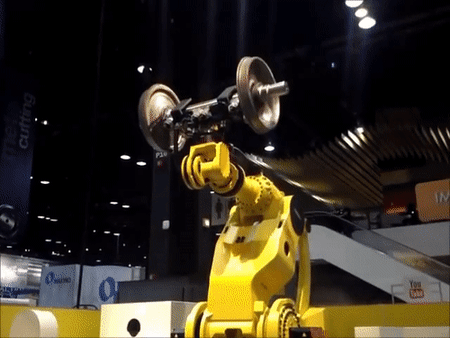
Onward to the math…
Linear Algebra (at least basic level) — You’ll
need to be intimately familiar with matrices, vectors, and matrix
multiplication. Khan Academy has some good exercises for linear algebra. I also recommend 3blue1brown’s YouTube series Essence of Linear Algebra for getting a better intuition for linear algebra. As for textbooks, I would recommend Linear Algebra and Its Applications by Strang & Gilbert (for getting started), Applied Linear Algebra by B. Noble & J.W. Daniel (for applied linear algebra), and Linear Algebra, Graduate Texts in Mathematics by Werner H. Greub (for more advanced theoretical aspects).
Calculus (at least basic level) — If
you have an understanding of derivatives and integrals, you should be
in the clear. Otherwise even simpler concepts like gradient descent will
elude you. If you need more practice, Khan Academy is likely the best
source of online practice problems out there for differential, integral, and multivariable calculus. Differential equations are also helpful for machine learning.
Statistics (at least basic level) — Statistics
is going to come up a lot. At least make sure you’re familiar with
Gaussian distributions, means, and standard deviations. Every bit of
statistical understanding beyond this helps. Some good resources on
statistics can be found at, you probably guessed it, Khan Academy. Elements of Statistical Learning, by Hastie, Tibshirani, & Friedman, is also great if you’re looking for applications of statistics to machine learning.

BONUS: Physics (at least basic level) — You
might be in a situation where you’d like to apply machine learning
techniques to systems that will interact with the real world. Having
some knowledge of physics will take you very far, especially when it
comes to understanding concepts like Nesterov momentum or energy-based models. For learning physics online, I would point to Physics for the 21st Century, MIT’s online physics courses, UC Berkeley’s Physics for Future Presidents, and Khan Academy. For textbooks, I would look at Frank Firk’s Essential Physics 1.
BONUS: Numerical Analysis (at least basic level) — A
lot of machine learning techniques out there are just fancy types of
function approximation. These often get developed by theoretical
mathematicians, and then get applied by people who don’t understand the
theory at all. The result is that many developers might have a hard time
finding the best technique for their problem. If they do find a
technique, they might have trouble fine-tuning it to get the best
results. Even a basic understanding of numerical analysis will give you a
huge edge. I would seriously look into Deturk’s Lectures on Numerical Analysis from UPenn, which covers the important topics and also provides code examples.
All
this math might seem intimidating at first if you’ve been away from it
for a while. Yes, machine learning is much more math-intensive than
something like front-end development. Just like with any skill, getting
better at Math is a matter of focused practice. There are plenty of
tools you can use to get a more intuitive understanding of these
concepts even if you’re out of school. In addition to Khan Academy, Brilliant.org is a great place to go for practicing concepts such as linear algebra, differential equations, and discrete mathematics.
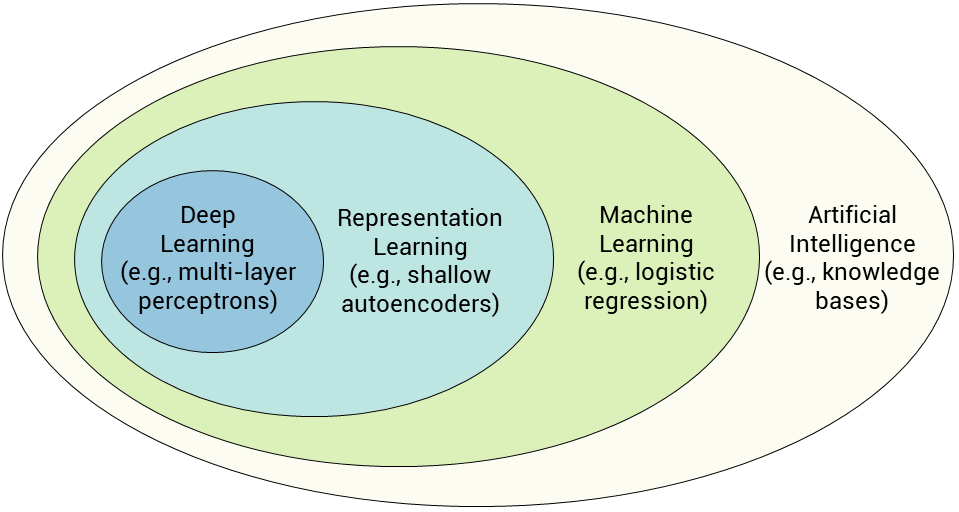
Common non-neural network Machine Learning Concepts — You
may have decided to go into machine learning because you saw a really
cool neural network demonstration, or wanted to build an artificial
general intelligence (AGI) someday. It’s important to know that there’s a
lot more to machine learning than neural networks. Many algorithms like
random forests, support vector machines (SVMs), and Naive Bayes Classifiers
can yield better performance for your hardware on some tasks. For
example, if you have an application where the priority is fast
classification of new test data, and you don’t have a lot of training
data at the start, an SVM might be the best approach for this. Even if
you are using a neural network for your main training, you might use a
clustering or dimensionality-reduction technique first to improve the
accuracy. Definitely check out Andrew Ng’s Machine Learning, as well as the Scikit-learn documentation.
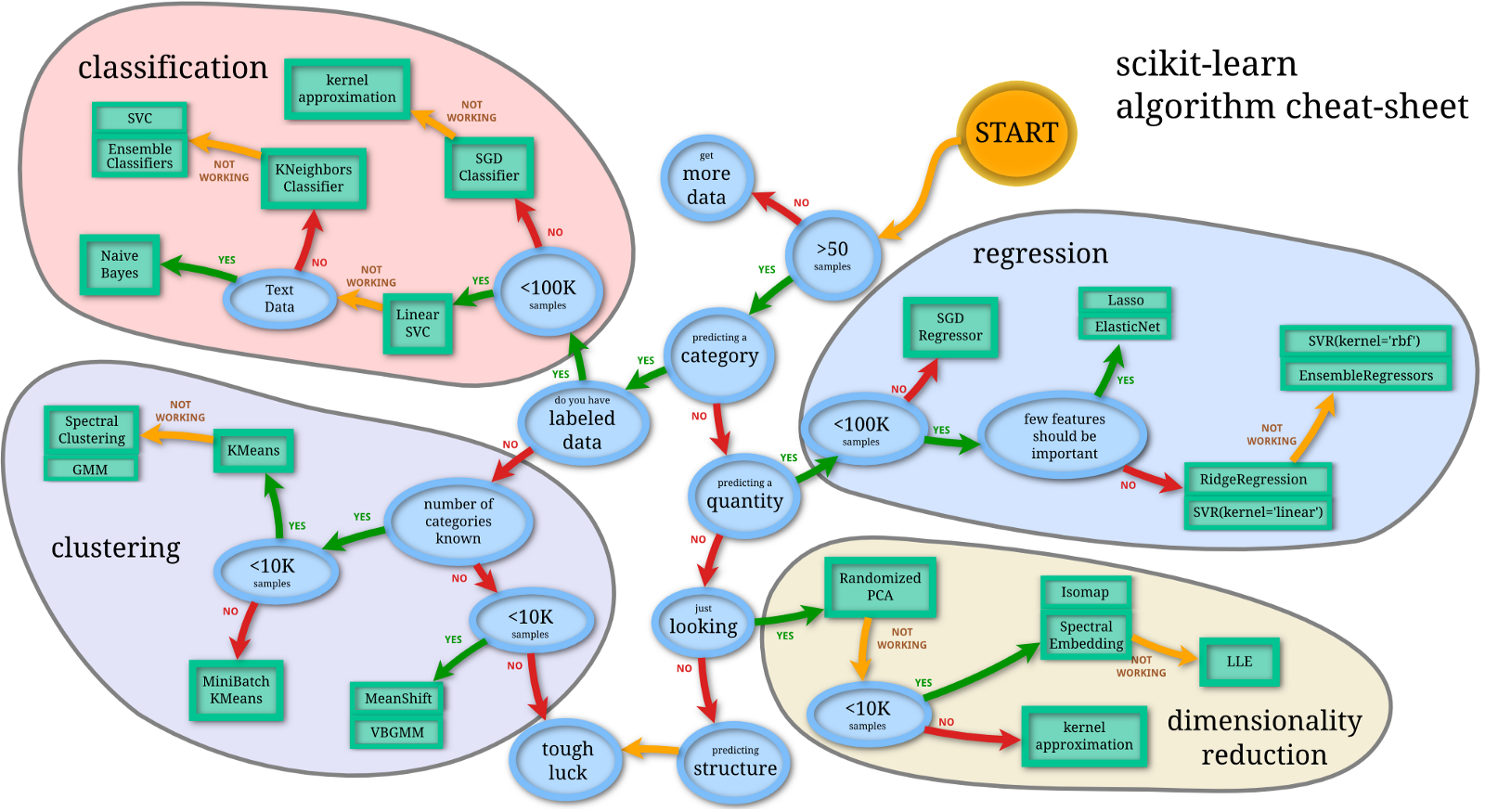
Common Neural Network Architectures — Of
course, there are still good reasons for the surge in popularity of
neural networks. Neural networks have been by far the most accurate way
of approaching many problems, like translation, speech recognition, and
image classification. Andrew Ng’s Machine Learning (and his more up-to-date Deep Learning specialization) are great starting points. Udacity’s Deep Learning is also a great resource that’s more focused on Python implementations.
Bear
in mind, these are mainly the skills you would need to meet the minimum
requirements for any machine learning job. However, chances are you’ll
be working on a very specific problem within Machine Learning. If you
really want to add value, it will help to specialize in some way beyond
the minimum qualifications.
Specialized Skills and Subdisciplines
Computer Vision — Out of all the disciplines out there, there are by far the most resources available for learning computer vision. Getting a convolutional neural network to get high accuracy on MNIST
is the “hello world” of machine learning. This field appears to have
the lowest barriers to entry, but of course this likely means you’ll
face slightly more competition. A variant of Georgia Tech’s Introduction to Computer vision is available for free on Udacity. This is great if you supplement this course with O’Reilly Learning OpenCV and Richard Szeliski’s Computer Vision: Algorithms and Applications (he’s the founding director of the Computational Photography group at Facebook). I also recommend checking out the Kaggle kernels for Digit recognition, Dogs vs Cats classification, and Iceberg recognition.
Natural Language Processing (NLP) — Since it combines computer science and linguistics, there are a bunch of libraries (Gensim, NLTK) and techniques (word2vec, sentiment analysis, summarization) that are unique to NLP. The materials for Stanford’s CS224n: Natural Language Processing with Deep Learning class are readily available to non-Stanford students. I also recommend checking out the Kaggle kernels for the Quora Question Pairschallenge and Toxic Comment Classification Challenge.
Voice and Audio Processing — This
field has frequent overlap with natural language processing. However,
natural language processing can be applied to non-audio data like text.
Voice and Audio analysis involves extracting useful information from the
audio signals themselves. Being well versed in math will get you far in
this one (you should at least be be familiar with concepts like fast
Fourier transforms). Knowledge of music theory also helps. I recommend
checking out the Kaggle kernels for the MLSP 2013 Bird Classification Challenge and TensorFlow Speech Recognition Challenge, as well as Google’s NSynth project.
Reinforcement Learning — Reinforcement
learning has been a driver behind many of the most exciting
developments in deep learning and artificial intelligence in 2017, from AlphaGo Zero to OpenAI’s Dota 2 bot to Boston Dynamics’s Backflipping Atlas.
This is will be critical to understand if you want to go into robotics,
Self-driving cars, or any other AI-related area. Georgia Tech has a
great primer course on this available on Udacity. However, there are so many different applications, that I’ll need to write a more in-depth article later in this series.

There
are definitely more subdisciplines to ML than this. Some are larger and
some have yet to reach maturity. Generative Adversarial Networks are
one of these. While, there is definitely a lot of promise for their use in creative fields and drug discovery, they haven’t quite reached the same level of industry maturity as these other areas.
BONUS: Automatic Machine Learning (Auto-ML) — Tuning
networks with many different parameters can be a laborious process (in
fact, the phrase “graduate student descent” refers to getting hordes of
graduate students to tune a model over the course of months). Companies
like Nutonian (bought by DataRobot) and H2O.ai have recognized a massive need for this. At the very least, knowing how to use techniques like grid search (like scikit-learn’s GridSearchCV)and random search will be helpful no matter your subdiscipline. Bonus points if you can implement techniques like bayesian optimization or genetic algorithms.
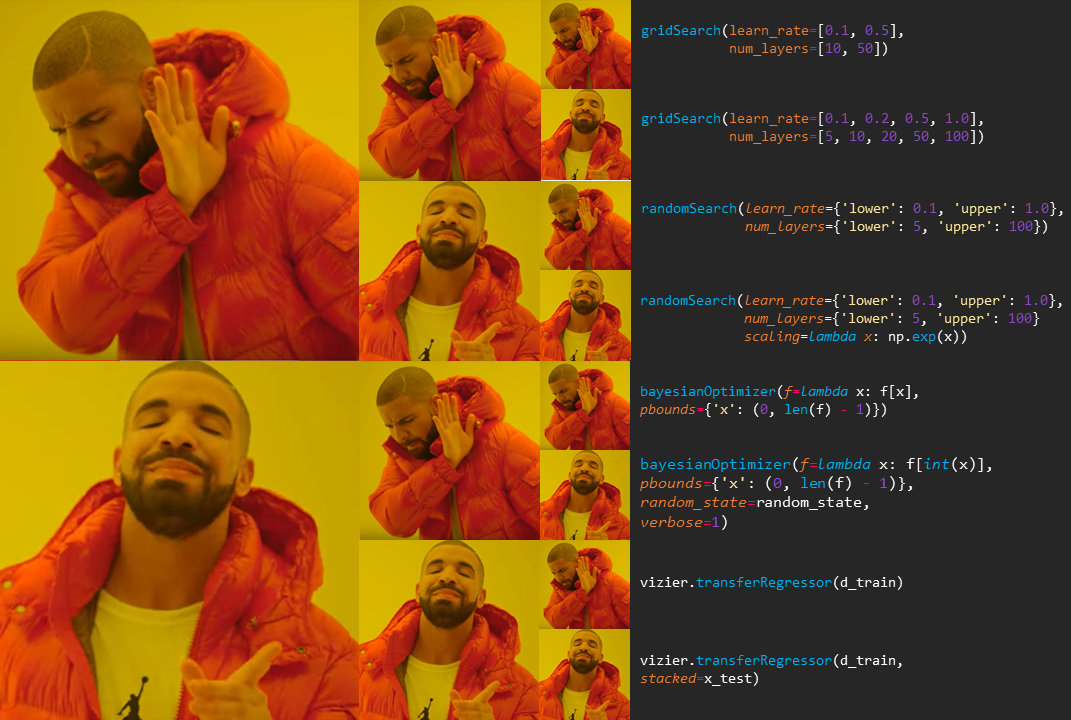
Conclusions
With
this overview of machine learning skills, you should hopefully have a
better grasp on how the different parts of the field relate to one
another. If you want to get a quick, high-level understanding of any of
these technical skills, Siraj Raval’s YouTube channel and KDnuggets are good places to start.
It’s
not enough to just have this list of subjects in you head though.
Certain approaches to studying this are more effective than others.
Part 3: Immersion and Finding Mentors
Self
study can be tricky, even for those of us without any kind of attention
deficit disorder. It’s especially important to note that not all self
study is equal in quality. Take studying a language, for example. Many
people have had the experience of learning a language for years in a
classroom setting. When they go spend a few weeks or months in a country
where that language is all that is spoken, they often describe
themselves as learning much more quickly than in the classroom setting.
This is often referred to as learning a language by immersion. This means that even the instructions for what you need to do with a language are in the language itself.
While
learning a subject like machine learning might be functionally
different than learning another spoken language (you’re not going to be
speaking in classes and functions, after all), the principle of
surrounding yourself with a subject and filling as many hours of the day
with it is important here. That is what we’re talking about when we
talk about immersion with respect to machine learning. What Cal Newport
might say is that the reason formal institutions often consistently
result in higher quality is immersion for non-language subjects. People
spend many hours per day in structured settings where it’s almost
difficult NOT to study a particular subject. The ones that find more
immersion (i.e., taking additional more advanced classes, spending more
time studying the subject with others, involving themselves in original
research efforts) are the ones that succeed more.
If
you’re studying machine learning in a formal setting, good for you.
Much of the rest of the advice in this post still applies, but you’ve
got an edge. If you’re not studying machine learning in a formal
setting, or if you’re entering into the space from a different field,
your challenge is going to be building your own habits, commitments,
structures, and environments that make you spend as much time studying
machine learning.
How
do you do this? First, you’re going to need to put together a schedule
for learning the different subjects listed in the previous section. Fow
varied this is or how long it will take will depend on your previous
familiarity with the mathematical concepts involved (try starting with 1
week for reviewing each of the subjects to get a sense for the space,
and spend more or less time based on your previous familiarity).
You
should try to fit at least 2 hours into each day studying. EVERY.
SINGLE DAY. This spaced repetition will become stronger as your learning
streaks get longer (and you will be surprised at how rusty you can get
after taking just a single day off). If you can fit more than 2 hours
into certain days, like on weekends, that’s even better. Even when I was
working full time, I was making sure to fit at least 2 hours of
studying each day (part of this was the result of learning how to
effectively read papers, books, and tutorials while also riding a train
or bus). While there were occasionally holidays that I would use for
structured study-sessions, most of this found time came from
relentlessly optimizing what I spent my time doing.
You
should make sure to have a minimum amount of time each day scheduled in
your calendar (and I mean actually reserved in your calendar, in a slot
where nothing else can be scheduled over). Set up alerts for these
times, and find an accountability buddy (someone who can keep you
accountable if you do not study during these times. In my case I had
other friends that were studying subjects in machine learning and we
would present each other with our notes and/or github commits). 2 hours a
day minimum can sound like a lot, but if you remove the items from your
schedule that are less important (*cough* social media), you will be amazed at how much time you can find.

Now
at this point, much of the content has focused on what you as an
individual can to do improve your studying. There’s one more thing to
keep in mind when studying:
DON’T GO IT ALONE.
You’re
probably inexperienced in machine learning if you’re looking for advice
form this post. For the self study, it is absolutely critical that you
find a network of mentors (or at the very least one incredibly
experienced mentor). If you don’t find a mentor, you will have to put a
lot more time and effort into self-study to get the same results as
someone that had a mentor and put in less practice. Our culture is
flooded with the trope of the lone Genius. Many may correctly point out
that people like Mozart and Einstein became masters in their fields by
putting in thousands of man-hours while they were still young. However,
many of the same people often ignore the critical roles that mentors
played in their careers (Mozart had his father, and Einstein had
professors in one of the best physics departments on the planet at the
time).
Why
is finding a mentor so important? Chances are they may have been down
the same road you’re travelling. They have a better map of the space,
and will probably have a better grasp of the common pitfalls that plague
people earlier in their careers. They’ll be able to tell you whether
the machine learning idea you’re working on is truly novel, or whether
it’s been done countless times with a non-ML implementation
There are a few possible steps to acquiring a mentor
- Create a list of prospective mentors: Create a list of experienced people in the field of interest (in this case it might be computer science or machine learning). This list can be updated as time goes on, and you get a better feel for how everyone is connected in the space. You might be surprised at what a small world the machine learning space is.
- Be indirect at first: If you’re talking to a potential mentor for the first time, start out with very specific questions about their work. Demonstrate your interest by showing you’ve put thought into your questions (ask the kinds of questions where it seems like you’ve exhausted other research resources, and are coming to them because nobody else would have a good answer). Also, for those on your list, I would avoid asking literally “will you be my mentor?”. If the person in question is qualified to be a mentor, then they may not have a lot of time to spare in their schedule (especially not for something that sounds like it would require committing a lot of time to a person they just met). That leads me to the much better strategy…
- Demonstrate value: Again, if a person is experienced enough to be a good mentor, chances are they will also have very little spare time on their hands. However, they will often be willing to provide advice or mentorship if you’re willing to help them out with a project of theirs. Offer to volunteer. yes, I know unpaid internships can be considered dubious, but at this point in time getting a good mentor at all is more important. This can be a short term project that could turn into a referral for a much more rewarding one.
- Use youth to your advantage (if possible): If you are young, you might have an advantage. People are a lot more willing to help simply if you are younger. You might be nervous about approaching people a lot older, but you actually have a lot less to fear than you realize. The worst they can do is say no.
- Be open to reverse mentors: By reverse mentors, I mean people that are younger than you, but that are also much further ahead in their machine learning journeys. You may have come across people that have been programming since they were 5 years old, built their first computer not from a kit, but completely from scratch. They’ve started ML companies. They’re grad students at top CS programs. They’re Thiel fellows or Forbes 30 under 30s. If you happen to run into these people, do not be intimidated or envious. If you have someone like this in your network as a machine learning expert, try to learn from them. I’ve been fortunate enough to meet a bunch of people like this, and they were invaluable in helping me find the next steps.
- Be humble and obedient: It’s important that you remember you are coming to them for advice. They are taking time out of their busy schedule to give you recommendations. If you want someone to remain your mentor, then you should defer to their judgement. If you do something different than what they say or don’t do it at all, that will be a pretty good signal them that you either don’t value their advice, or that you aren’t that serious about becoming a machine learning engineer.
If
you focus on making sure you get as much immersion as possible, and you
are able to find experienced machine learning engineers to provide
advice and guidance, you’re off to a fantastic start.

There is one, last, minor detail to consider before you begin your learning journey…. you need an actual computer to program on.
Part 4: Software and Hardware Resources
Programming
for machine learning often distinguishes itself from web programming by
the fact that it can be much more demanding in terms of hardware. When I
started out on my machine learning journey, I originally used a
3-year-old Windows laptop. For basic machine learning tutorials this may
be adequate, but once you try spending 28 hours training a simple
low-resolution GAN, hearing your CPU scream in agony the whole time,
like me you will realize you need to expand your options.

The choice of environments can be daunting at first, but it can easily be split up into a parseable list.
The
first thing you may be wondering is whether you should pick Windows,
Mac, or Linux. A lot more packages, like you would see with Anaconda,
are compatible with Mac and Linux rather than Windows. Tensorflow and
PyTorch are available on all 3, but some less common but still useful
packages like XGBoost may be trickier to install on Windows. Windows has
becoming more popular in recent years as a development platform for
machine learning, though this has largely been due to the emergence of
more cloud resources with Azure. You can still use a Windows machine to
run software that was developed for Mac or Linux, such as by setting up a
VirtualBox virtual machine. It’s also possible you could use a Kaggle
kernel or a databricks kernel, but that of course is dependent on having
a great internet connection. For the operating system, if you’re
already used to using a Mac you should be fine. Regardless of which
operating system you choose, you should still try to add an
understanding of Linux to your skill set (in part because you will
probably want to deploy trained models to servers or larger systems of
some kind.
For
your machine learning set up, you have four main options: 1) the Laptop
Option, 2) Cloud Resources/Options, 3) Desktop Option and 4) Custom/DIY
Machine Learning Rigs.
Laptop Option: Favoring portability & Flexibility — If
you’re going for the machine learning freelancing route, this can be an
attractive option. It can be your best friend if you’re a digital nomad
(albeit, one that might feel like a panini press if you’re keeping it
in your actual lap when you’re using it for model training). With that
in mind, here are some features and system settings you should make sure
you have if you’re using your Laptop for Machine Learning.
- RAM: Don’t settle for anything less than 16 GB of RAM.
- GPU: This is probably the most important feature. Having the right GPU (or having any GPU instead of just CPUs) could mean the difference between model training taking an hour or taking weeks or months (and making lots of heat and noise in the process). Since many ML libraries make use of Cuda, go with an NVIDIA graphics card (like a GeForce)for the least amount of trouble. You may need to write some low-level code for getting your projects to run on an AMD card.
- Processor: Go with an Intel i7 (if you’re a Mr. Krabs-esque penny-pincher, make sure you don’t go below an Intel i5).
- Storage: Chances are you’re going to be working on projects that require a lot of data. Even if you have extra storage on something like Dropbox or an external drive, make sure you have at least 1 TB.
- Operating System: Sorry Mac and Windows cultists, but Skynet is probably going to be running on Linux when it comes out. If you don’t have a computer with Linux as the main OS yet, you can make a temporary substitute by setting up a virtual machine with Ubuntu on either your Mac or Windows machine.
When it comes to specific brands there are many choices. Everyone from Acer to NVIDIA has Laptops.
My personal choice? I went with a laptop specialized for machine learning from Lambda Labs.
Of
course, if you insist on using a Mac, you could always connect your
machine to an external GPU (using a device like an NVIDIA Pascal)
But if you’re strapped for cash, don’t fear. You can always go with one of the cheapest laptops out there (e.g., a $249 Chromebook),
and then use all the money you saved for cloud computing time. You
won’t be able to do much on your local machine, but as long as you have a
decent internet connection you should be able to do plenty with cloud
computing.
Speaking of cloud computing…
Cloud Resources/Options — It’s
possible that even your powerful out-of-the-box or custom build won’t
be enough for a really big project. You’ve probably seen papers or press
releases on massive AI projects that use 32 GPUs over many days or weeks.
While most of your projects won’t be quite that demanding, it will be
nice to have at least some options for expanding your computing
resources. These also have the benefit of being combined with whatever
laptop you have, combining it
Microsoft
Azure is usually the cheapest for compute time (I might be fanning the
flames of the Github/Gitlab holy war here). Amazon usually has a lot
more options (including more obscure options like combining it with data
streaming Kinesis or long term storage in S3 or Glacier). If you’re
using a Tensorflow Model, Google Cloud’s TPUs (i.e., re-marketed GPUs)
are optimized for models built using this. They also offer tools and
services for optimizing your hyperparameters, so you don’t have to set
up the bayesian Optimization yourself.

If
you’re relatively new to using Cloud Services, Floydhub is the simplest
to use in terms of user experience. If you’re a beginner, this is by
far the easiest one to set up.
Then
again, you might not find the idea of shelling out a bunch of money for
GPU compute-time for every project you want to do. At some point, you
may decide to yourself that you only want to concern yourself with the
electric bill when it comes to compute power, nothing else.
Desktop Option: Powerful and reliable — If
you don’t want to have variable costs due to cloud computing bills, and
you don’t want your important machine learning work to be at risk for
environmental damage, another option could be to set up a Desktop
environment. Lambda Labs and Puget Systems
make some really great high-end desktops as well. The hardware options
for a desktop can take a bit more skill to navigate, but here are some
general principles to keep in mind:
For
the GPU, go with an RTX 2070 or RTX 2080 Ti. If cost is a concern,
going with a cheaper GTX 1070, GTX 1080, GTX 1070 Ti, or GTX 1080 Ti can
also be a good option. However many GPUs you have, make sure you have
1–2 GPU cores per GPU (more of you’re doing a lot of preprocessing). As
long as you buy at least as much CPU RAM to match the RAM of your
largest GPU, go with the cheapest RAM that you can (Tim Dettmers has a post explaining how the clock rates make little meaningful difference). Make sure the hard drive is at least 3 TB in size.

If
possible, go with a solid-state drive to improve the speed for
preprocessing small datasets. Make sure your setup has adequate cooling
(this is a bigger concern for Desktops than for laptops). As for
monitors, I’d recommend putting together a dual-monitor setup (3 may be
excessive, but knock yourself out. I don’t know what you would use 4 for
though).
Downside?
Basic models will cost about $2,000 to $3,000, with high-end machines
costing around $8,897 to $23,000. This is much steeper than the laptop
option, and unless you’re training complex models on massive datasets,
this is probably outside your initial budget for cloud computing.
However,
there is a big advantage that desktops have over laptops: Since desktop
computers are less restricted by design constraints such as
portability, or not turning your lap into a panini press from the heat radiating from it, it is far easier to build and customize your own. This can also be a fantastic way to cheaply build your ideal machine.
Custom/DIY Machine Learning Rigs: For the enthusiast — Chances
are if you’re in the field for a while, you’re going to start wanting
to build your own custom computer. It’s an inevitable consequence of
thinking about how much GPU resources you’re spending on a project for
this long. Given that the development of the GPUs that made cheap and
effective machine learning was pretty much subsidized by the gaming
industry, there are plenty of resources out there on building your own
PC. Here is an example breakdown of a few components and their prices.
These were intentionally selected for being cheap, so you could easily
replace any of the parts with something higher-end.

It’s
entirely possible that your level of comfort with hardware might not be
on the same level as your software comfort. If that’s the case,
building your PC is certainly going to be a lot (and I mean A LOT)
trickier than it is in PC Building Simulator. If you do succeed, this
can be a fun project, and you’ll also save money on a desktop machine
learning rig
With the custom build, you also have the option for some pretty out-there options as well…




Whichever
setup you choose, whether it be mainly Laptop, Cloud-based, Desktop, or
custom build, you should now be more than ready to run your own machine
learning projects.
Of
course, becoming a machine engineer is about more than just setting up
your hardware/software environment correctly. Since the field is
changing so much, you’re going to need to learn how to read research
papers on the subject.
Part 5: Reading Research Papers (and a few that everyone should know)
In
order to have a proper understanding of machine learning, you need to
get acquainted with the current research in the space. It’s not enough
to agree with claims of what AI can do, just because it got enough hype on social media.
If you have GPU resources, you need to know how to properly utilize
them or else they’ll be useless. You need to learn to be critical and
balanced in your assessment. This is what PhD students learn how to do,
but luckily you can also learn how to do this.

For finding new papers to read, you can often find them by following machine learning engineers and researchers on Twitter. The machine learning subreddit
is also another fantastic resource. Countless papers are available for
free on Arxiv (and if navigating that is too intimidating, Andrej
Karpathy put together archive sanity to make I easier to navigate). Journals like Nature and Science can also be good sources, too (though Arxiv often has much more, and without paywalls).
Usually there about 2 or 3 papers that are particularly popular in any given week.
For
getting through a paper, it usually helps if you have some kind of
motivation for getting through it. For example, if I want to learn about
influence functions or Neural ODEs,
I will search through the papers and read them until I understand them.
As was mentioned before with the immersion, how far you get is going to
be a function of discipline, which in turn is going to be influenced
even further by your motivation.
For any given paper, there are certain techniques you can use to make the information easier to digest and understand. The book “How to read a book”
is a fantastic resource that described this in detail. In short, you
can use what is known as a three-pass approach. In the first pass
through the paper, you can just skim through the paper to see if it is
interesting. This means you first read the title, and if it’s appealing
move onto the abstract. The abstract is the short summary at the
beginning that covers the main points in the papers. If that seems good,
you move onto the introduction, read through that, then read the
section and subsection headers, but not the content of those sections.
In the first pass, you can temporarily ignore the math (assume it’s
sound for now). Once you go through the section headers, you read the
conclusion, and then skim through the references. In the references, if
you see any papers that you’ve read before, you can mark those. The
whole purpose of this first pass is to understand what the purpose of
the paper is, what the authors are trying to do, what problem they are
trying to solve. After the first pass, I will usually turn to Twitter
(or whatever source the paper came from), and compare what others are
saying about the paper to my initial assumptions.
If
after all this I have determined that the paper is interesting enough
to read more in-depth, I’ll take another pass through it. I’ll try to
get a high level understanding of the math in the paper. I’ll read the
thicker descriptions, the plots, and try to understand the high-level
algorithm. I’ll usually pay more attention to the math this time around.
However, there may be times where the author tries to factor out all
the math. On the second pass I’m still not going through these
factorizations and derivations just yet. When I read the experiments, I
will try to evaluate whether the experiments seem reproducible. If there
is code available on Github for this paper, I will usually follow the
Github link and read through the code, and perhaps even try running some
part of it on my own device. Usually comments in the code help with
understanding. I will also read through other online resources online
that help with understanding (the more popular papers often have plenty
of high-level summaries, such as on sites like ML Explained).
On
the 3rd pass, this is when you try to understand the math itself. At
this point, you will be going through the paper with a pen and notepad,
and following along with the math itself. If there are any mathematical
terms or concepts that you do not understand, this is the point where
you search online for better explanations. If you’re really ambitious,
you can also try replicating the paper in code form, complete with the
parameters and data that they use in the paper.
If
at any point you feel stuck or frustrated, just remember to not give
up. persistence will get you very far, and reading papers gets much
easier the more times you do it. If you’re still stuck on the math,
don’t hesitate to turn to Khan Academy or Wikipedia. If you’re looking
for even more help, try reaching out on the Machine Learning Subreddit,
or join a journal club meetup group in your city.
As
for which papers to start with, I would try applying the technique
above to some of the classic papers in machine learning. A lot of the
papers you read (especially the avalanche of GAN papers out there) will
have many concepts from these. I’ve listed a few of the big ones by
subject and included links to the papers.
- For Computer Vision, AlexNet (2012), ZF Net (2013), VGG Net (2014), GoogLeNet (2015), and Microsoft ResNet (2015) are the big ones
- For image segmentation, Region Based CNNs (R-CNN — 2013, Fast R-CNN — 2015, Faster R-CNN — 2015) and YOLO
- Generative Adversarial Networks (2014)
- Generating Image Descriptions (2014)
- Spatial Transformer Networks (2015)
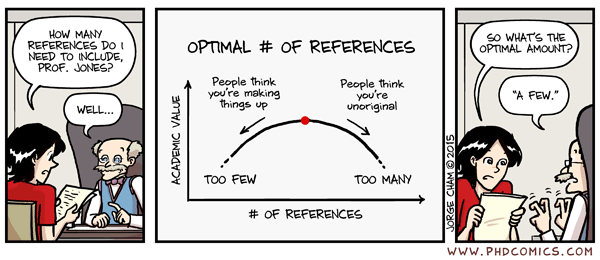
These
papers are a great starting point for a conceptual understanding of
where these large, daunting, machine learning models come from. While
this will take you very far in building projects and following the
latest developments, it also helps to know who is creating these developments.
Part 6: Groups and People you should be Familiar with
As
I mentioned before, finding mentors and reading papers are important.
However, it’s also worth paying attention to the work of specific
researchers.
Depending
on which subfield you go into, following certain individuals might be
more important than others, but generally speaking being familiar with
these ones will reduce the risk of you getting into an awkward moment at
NIPS. Since many of these groups are also the most heavily-connected,
you can probably navigate the increasingly crowded machine learning
research space by traversing a mental graph of who is connected to who,
and through whom.
For companies, there are the big ones you should be aware of: Deepmind (Google), Google Brain, Facebook (AI Lab), Microsoft Research (AI Lab), OpenAI.
These are the ones that get the most press, but it’s also worth keeping
in mind some of the smaller groups. These include but are not limited
to Vicarious, Numenta, MIRI, Allen Institute, IBM (Watson), Vision Factory (acquired by Google DeepMind), Dark Blue Labs (also acquired by Google DeepMind), DNNresearch (not acquired by Google DeepMind, but acquired by Google Brain), NNAiSene, Twitter Cortex, Baidu (AI Lab), Amazon (AI Lab), and Wolfram Alpha.

These
companies often get a lot attention for research in the ML space
because they often have much more computing resources (and can pay the
researchers more) than in academia. However, that’s not to say there
aren’t plenty of Academic research centers you should be aware of. These
include (but again, are not limited to) IDSIA (Dalle Molle Institute for Artificial Intelligence Research, Juergen Schmidhuber’s Lab), MILA — Montreal Institute of Learning Algorithms, University of Toronto (as a whole, since so many researchers like Ian GoodFellow and Geoffrey Hinton have come out of there), and Gatsby.
For researchers, Demis Hassabis (Co-founder of DeepMind), Shane Legg (Co-founder of DeepMind), Mustafa Suleyman (head of product at DeepMind), Jeff Dean (Google), Greg Corrado (Google AI Research Scientist), Andrew Ng (Stanford, Coursera), Ray Kurzweil (Transhumanism, computer vision, and too much else to list here), Dileep George (Vicarious), D. Scott Phoenix (Vicarious and Numenta), Yann Lecun (creator of CNNs, you should probably make sure you know this guy), Jeff Hawkins (Numenta, Palm Computing, and Handspring), and Richard Socher
(Salesforce, Stanford) are good ones to keep in mind. Like the list of
companies, this should not be considered a comprehensive list. Rather,
since many of these people are superconnectors within the machine
learning space, you can gradually build up a graph to connect the most
prominent people. If you want to stay connected and aware without
information overwhelm, twitter is a fantastic tool (just keep the number
of people you’re following to under 1,500 and triage accordingly), as
well as newsletters like Papers with Code, O’Reilly Data Newsletter, KDNuggets News, and the Artificial Intelligence Podcast by Lex Fridman.

Of
course, it’s not enough to be familiar with the current celebrities of
machine learning. You should probably also make yourself familiar with
historical figures such as Charles Babbage, Ada Lovelace, Alan Turing. I
recommend Walter Isaacson’s “The Innovators” for an overview of the connection for all of them.
Again,
I should stress that your map of the organizations and prominent
researchers here should not be limited by this list. As with anything in
machine learning, you are going to need to continually update your
knowledge-base, and figure things out for yourself.
Speaking of figuring things out for yourself…
Part 7: Problem-Solving Approaches and Workflows
The
ultimate goal behind reading many research papers, working on many
projects, and understanding the works of top researchers is to better
develop your own approaches. While the workflows of top researchers can
be attributed at least partially to intuition from having seen so much,
there are still some general patterns and steps you can take for
undertaking a machine learning project. Many of these apply for
everything from original research to developing models for freelance
clients.
Determine if Machine learning is actually necessary:
It’s of course not as simple as throwing a neural network at
everything. First off, you might want to make sure that for the problem
you’re working on Machine learning will actually be an improvement over
some other algorithm. You wouldn’t use a neural network to solve FizzBuzz, riiiiiiiight?
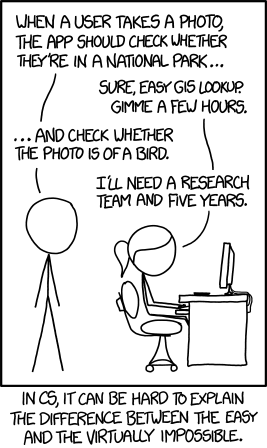
Understanding the type of problem: Once
you’ve determined that using machine learning would be beneficial, you
probably want to determine what specific type of machine learning is
useful (or even if a pipeline with multiple steps would be useful). Are
you trying to get a model that matches patterns in known data? You’re
probably using Supervised learning. Are you trying to uncover patterns
you’re not sure exist? It’s likely unsupervised learning that you’re
working on. Are you working with data that changes after each output
from your model? You’re probably going down the reinforcement learning
path.
Check Previous work: It
is a wise precaution to see what other previous work has been done on a
problem. Take a scan of Github to get some ideas. It’s also worth
looking into existing literature on a specific problem.
Image-processing, for example, has so many solutions that some refer to
it as a solved problem. Facebook’s AIs can already recognize human faces
with much greater accuracy than most humans. That being said, it’s
likely you will get to a point where even the best existing solutions
are inadequate (i.e., pretty much the state of the entire field of NLP
for many tasks). When it comes to that, there are a variety of different
steps you can incorporate into solving a problem.
Preprocessing and Exploratory Data Analysis: Before
you input the data into your model, you should always stop to make sure
your dataset is up to snuff. This can involve everything from checking
for missing data, to rescaling and filtering the data, to looking at the
relationships between parts of the data at a basic level.
For
preprocessing, one common technique is to use a zero mean (subtract the
mean from each predictor) to center the data, which can be combined
with dividing by standard deviation to scale the data. This can be used
for anything from tabular data to RGB values in images. Dates and times
should be put into a consistent DateTime format. If you have a lot of
categorical variables, it is more often than not crucially important to
One-Hot encode them. At this stage you should also strive to resolve any
outliers (and if possible understand their meaning). If your model is
sensitive to outliers, you can try applying a spatial sign. You should
also make the effort to eliminate any missing data. This can obviously
be problematic if missingness is somehow predictive. Tree-based models
are great for deal with missing data, or if you don’t have time for that
you can use imputation/interpolation (KNN or intermediate regression
model).
The
exploratory data analysis can also be useful for getting an intuitive
sense for what kinds of models or data reduction techniques could be
useful. This is important for finding possible relationships between any
and all of the features you might be working with. Calculations such as
Maximal Information Coefficients can be useful. Building correlation
matrices for the features (i.e., box-charting everything),
scatter-plotting and histogram-plotting every combination of features
can expand this even more. Don’t get so excited about jumping into using
a k-NN classifier that you forget the techniques from simple excel
tables, such as using pivot tables and grouping by particular features.
Some of your variables might need to be transformed (square, cube,
inverse, log, Optimus…wait…what?)
before they can be plotted or models can be trained on them. For
example, if you’re looking at river flow events or cryptocurrency
prices, it will probably be wise to plot values on a log scale. While
you’re putting together the boilerplate for automatically doing all
these steps for whatever dataset you find, don’t forget the classic
summary statistics (mean, mode, minimum, maximum, upper/lower quartiles,
identification of >2.5 SD outliers).
Data Reduction:
When beginning a project, it’s a good first step to see if reducing the
amount of data to be processed will help with the training. There are
many techniques for this. You’ve probably heard of using Principal
Component Analysis (PCA) or Linear Discriminant Analysis (LDA, in the
case of classification). Feature Selection, or only using the components
that account for a majority of the information when Modeling, can be
another easy way to focus on the important information to the model. How
do you decide what to remove? Removing low/zero variance predictors
(ones that don’t vary with the correct classification), or removing
multicollinear heavily correlated features (if there’s a 99% correlation
between two features, one of them is possibly useless) can be good
heuristics. Other techniques like Isomap or Lasso (in the case of
regression) can help even more.
Parameter tuning: Once
you do have your model running, i may not be performing exactly as you
wanted. Fortunately this can be solved with clever parameter tuning.
Unfortunately there are often many parameters for models like neural
networks, so some techniques like grid search may take longer than
anticipated. Unintuitively, using random search can give improvements
over grid search, but even then the dimensionality problem can remain.
There is a field focused on efficiently tuning large models. This can
involve anything from bayesian optimization, to training SVMs on data of
model parameters, to genetic algorithms for architecture search. That
being said, it is often the case that once you learn enough about the
techniques you’re using in a model (such as an Adam or AdaDelta
optimizer), you’ll begin to have an intuition for how to quickly
converge on ideal parameters based on the output of the training graphs.

Higher-level modelling techniques: We
covered the importance of feature engineering. This can cover
everything from basis expansions, to combining features, to properly
scaling features based on average values, median values, variances,
sums, differences, maximums or minimums, and counts. Algorithms such as
Random forest, boosters, and other tree-based models for finding the
important features. Clustering, or any models based on distances to
class centroids, can also be useful for problems where a lot of feature
engineering is needed.
Another
advanced technique is the use of stacking or blending. Stacking and
Blending are two similar approaches of combining classifiers
(ensembling). I recommend reading the Kaggle Ensembling Guide for more detailed information.
However
sophisticated your modelling techniques get, don’t forget the
importance of acquiring domain knowledge for feature engineering. This is a common strategy among Kaggle competition winners:
thoroughly researching the subject of the competition to better
influence their decisions for how to build their model. Even if you do
not have a lot of domain knowledge, you should be able to account for
missing data (It can be information), or add on additional external data
(such as with APIs).
Reproducibility: This
one is more a quality of workflows than problem-solving strategies.
You’re probably not going to do an entire project in one sitting. It’s
important to be able to pick up where you left off, or easily be able to
start from the beginning with only a few clicks. For model training,
make sure you set up your code to have the proper checkpointing and
weight-saving. Reproducibility is one of the big reasons why Jupyter
notebooks have gotten so popular in machine learning.
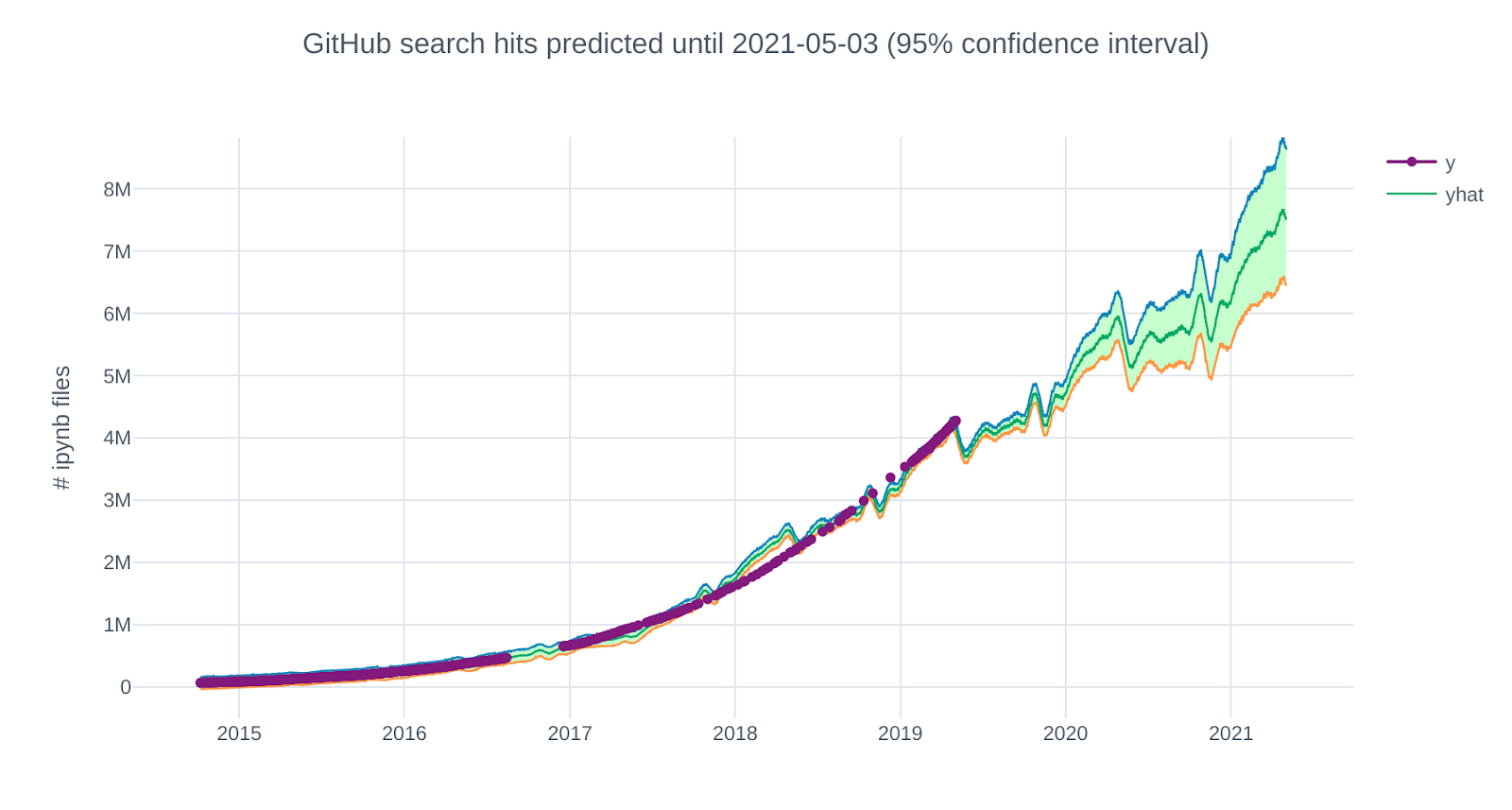
That
was a bit of a mouthful. I encourage you to follow the links within
there to learn more about the subjects. Once you have gotten the grasp
of these different strategies and workflows, the inevitable question is
what you should apply them to. If you’re reading this, your goal might
be to enter into machine learning as a career. Whether you do this as a
freelancer or a full-time engineer, you’re going to need some kind of
track record of projects. That’s where the portfolio comes in.
Part 8: Building your portfolio
When
you’re transitioning into a new career as a machine learning engineer
(or any kind of software-tangential career, not just ML), you may be
faced with an all too common conundrum: you’re trying to get work to get
experience, but you need experience before you can get the work to get
experience. How does one solve this Catch-22? Simple: Portfolio projects.
You
often hear about portfolios being a thing that front-end developers or
designers put together. It turns out this can be a crucial
career-booster for Data Scientists
and Machine Learning Engineers. Even if you’re not in the position of
looking for work just yet, the goal of building a portfolio can be
incredibly useful on its own for learning machine learning
What NOT to include in your portfolio
Before
we get into examples, it’s important to make it clear what should not
be included in your ML portfolio. For the most part, you have a lot of
flexibility when it comes to your portfolio. However, when it comes to
projects that could result in your resume being thrown in the trash,
there are 3 big ones that come to mind: Survival classification on the Titanic dataset. Handwritten digit classification on the MNIST dataset. Flower species classification using the iris dataset.

These
datasets are used so heavily in introductory machine learning and data
science courses, that having project based on these will probably hurt
you more than help you. These are the types of projects that are already
used in the example folders in many machine learning libraries, so
there’s probably not that many original uses for them.
Machine learning portfolio ideas
Now
that we have that warning out of the way, here’s some suggestions of
projects you CAN add to your machine learning portfolio.
Kaggle Competitions
Beyond Kaggle, there are other similar competitions out there. Halite
is an AI programming competition created by Two-Sigma investing. This
is somewhat more niche than Kaggle competitions, but it can be great if
you want to test your skills in reinforcement learning problems. The
only downside is that the competition is seasonal, and doesn’t have as
many frequent competitions as Kaggle, but if you can get your bot high
into the leaderboards when the next competition comes around, this can
be a great addition to your portfolio.

Implementations of Algorithms in Papers
Many
of the newer machine learning algorithms out there are first reported
in the form of scientific papers. Reproducing a paper, or reimplementing
a paper in a novel setting or on an interesting dataset is a fantastic
way to demonstrate your command of the material. Being able to code the
usual ML algorithms is one thing, but being able to take a description
of an algorithm and then turn it into a working project is a skill
that’s far too low in supply. This could involve reimplementing the
project in a different language (e.g., Python to C++), a different
framework (e.g., if the code for the paper was written in tensorflow,
try reimplementing in PyTorch or MXNet), or on different datasets (e.g.,
bigger datasets or less publically available datasets).
Mobile Apps with Machine Learning (e.g., Not Hotdog Spinoffs)
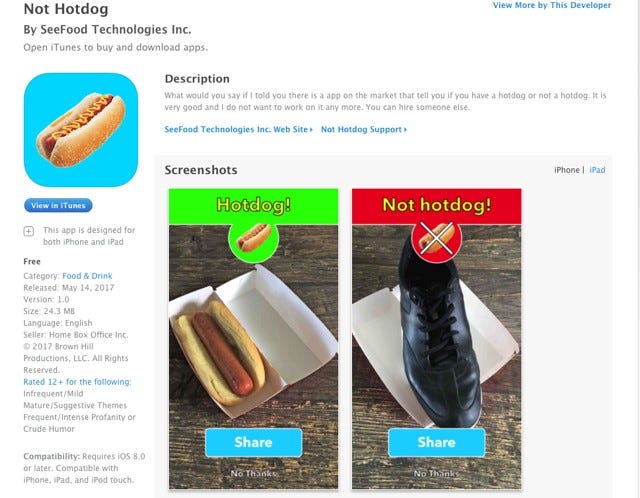
If
you’re looking for work in machine learning, chances are you won’t just
be making standalone JuPyter notebooks. If you can demonstrate that you
can integrate . Since libraries like tensorflow.js have come out for
doing machine learning in javascript, this is also a fantastic
opportunity to try integrating ML into react or react native
applications. If you’re really scraping the bottom of the barrel for
ideas, there’s always the classic “Not Hotdog” from HBO’s Silicon
Valley.
Of
course, copying the exact app probably won’t be enough (after all, the
joke was how poorly the app was prepared to handle anything other than hotdog and not hotdog.
What additional features can you add? Can you increase the accuracy?
Can you make it classify condiments as well? How big of a variety of
foods can you get it to classify? Can you also get it to provide
nutritional or allergy information?
Hackathons and other competitions
In
the absence of anything else, projects are often judged based on the
impact they’ve had or the notoriety they’ve received. One of the easiest
ways to get an impressive project in this regard is to put a hackathon
project into your portfolio. I’ve taken this approach in the past with
projects I’ve done as part of hackathons at MassChallenge or the MIT
Policy Hackathon. Being a track or prize-winner can be a fantastic
addition to your portfolio. The only downside is that hackathon projects
(including the edge cases) are basically glorified demos. They are
often terrible at standing up to much scrutiny or edge cases. You may
want to polish you code a bit before adding it to your portfolio.

Don’t
feel the need to restrict yourself to these ideas too much. You can
also add any talks you’ve given, livestream demos you’ve recorded, or
even online classes you’ve taught. If you’re looking for any other
inspiration, you can take a look at my portfolio site as an example.
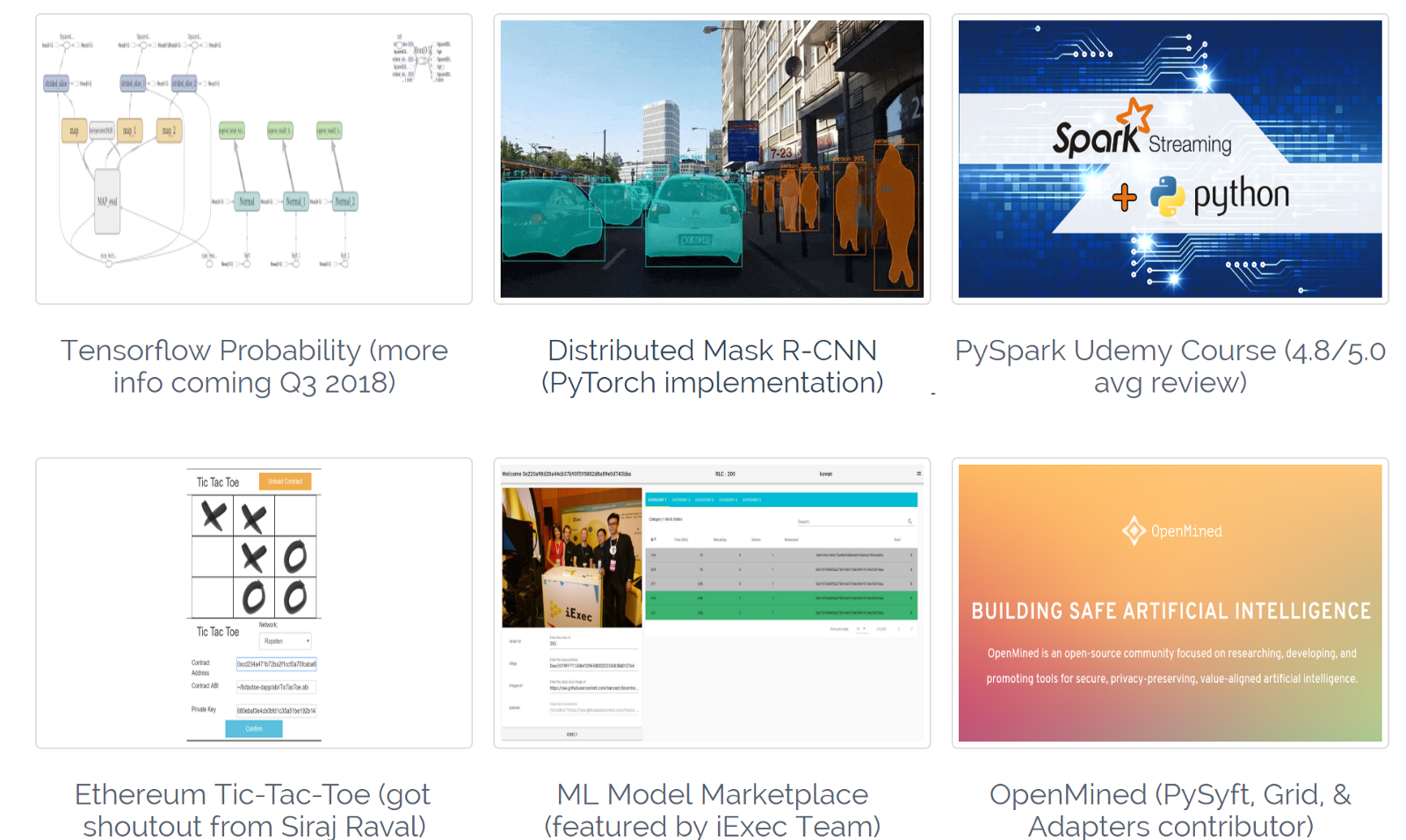
Above
all else, it’s important to remember that a portfolio is always a work
in process. It’s never something that you will 100%. If you wait until
that point before you start applying to jobs and advertising your
skills, you’ve waited too long.
Part 9: Freelancing as an ML developer
There
may be many areas of Machine Learning you might be interested in doing
research in. When it comes to getting hands-on experience and immersion.
Working on paid ML work is the next level up. It’s also incredibly easy
to get started.
For
sites to do freelancing on, I recommend turning to Upwork or
Freelancer. Freelancer requires payment for taking the skill tests on
their site, so Upwork may be superior in that sense (at least, that’s
why I chose it).
If
you’re looking to delegate more on the side of project management and
screening potential clients, Toptal might be a good option. Toptal
Screens potential clients for you, as well as provides support on
project management. The only downside is that they also heavily screen
freelancers as well (They advertise that they only hire the “Top 3% of
freelancers”. Whether or not that exact statistic is true, they are
nonetheless very selective). Becoming a freelancer with Toptal will
require passing a timed coding test, as well as passing a few
interviews.
You
may have also built up a neat portfolio geared towards the ML subfield
you’re interested in. This portfolio solves one problem with places
hiring “junior” machine learning developers, but another remains. Few
people/organizations are looking for anything other than “Senior” ML
developers. I’ve seen job postings that require +5 years of experience
with libraries like Tensorflow, despite the fact that Tensorflow has only been out for 3 years.
Why does this happen? Most places that are hiring for ML work,
regardless of specifics of the job description, are pretty much looking
for the same thing: a Machine Learning Mary Poppins to come in and solve
all their problems.

To
increase your chances of convincing an organization you’re the solution
to their problems, it helps to build up a track record of successful
projects. In my case, I met with my first clients in person and agreed
on a project with them first, before the payment and contract was set up
on Upwork. The advantage of this method is that if your first client is
someone you know, you can get a starting reputation on the site, and
potentially get some constructive criticism at the same time.
The
work you DO end up getting may be slightly different from the goals you
had in mind when creating your portfolio. With that, your goal may have
been to demonstrate that you could code well, or implement a research
paper in code, or do a cool project. Freelance clients will only care
about one thing: Can you use ML to solve their problems.
They
say it’s better to learn from the mistakes of others instead of just
relying on your own. You can find such freelancing horror stories
curated at Clients From Hell.
While most of these examples are from freelance artists, designers, and
web developers, you may encounter some similar types (e.g., poor
communicators, clients who overestimate the capabilities of even
state-of-the-art machine learning, people with tiny or even nonexistent
budgets, and even the occasional racist).


While
it’s amusing to poke fun at some of the more extreme cases, it’s also
important to hold yourself to a high standard when it comes to working
for your clients. If your client is proposing something that is not
possible with the current state of ML as a field, do not try and prey on
their ignorance (that WILL come back to bite you). For example, I had
one client reach out to me about original content summarization, and how
they wanted to integrate it into their project. After doing some
research, I presented them with the performance results of some of
Google Brain’s summarization experiments. I told them that even with the
resources of Google, these results were still far below human
performance on summarization, and that I could not guarantee better
performance than the world’s state of the art. The interviewer thanked
me for my honesty. Obviously I did not get that particular contract, but
if I had lied and said that it was possible, then I would have been
faced with an impossible task, that likely would have resulted in an
incomplete project (and it would have taken a long time to get that
stain off my reputation). When it comes to expectations, be absolutely
transparent.
They say that trust has a half-life of 6 weeks. This actually is false. This applies when you are working in an office environment, but if you’re doing remote work, trust can have a much shorter half life. Think 6 days instead of 6 weeks.
Over
time, as you get new clients and grow your reputation, you will be able
to earn more as a freelancer and transition to more and more
interesting projects.
At
some point, however, you may decide that you prefer something with more
stability. This is a conclusion I eventually came to, even after
working with a company like Google as a contractor (the very first
machine learning contractor that the Tensorflow team ever hired). When I
did, I decided to take the leap to interview for full-time machine
learning engineer positions.
Part 10: Interviewing for Full-time Machine Learning Engineer Positions
This
is by far the most intense part of the machine learning journey.
Interviewing with companies is often much more intense than interviewing
with individual freelance clients (though most companies that hire
freelancers will do pretty thorough interviews for contract work as
well). If you’re interviewing with smaller startups, then they may be
much more flexible with their hiring process (compared to companies like
Facebook or Amazon, where an entire sub-industry has sprang up around
teaching people how to interview for those). Regardless of who you’re
interviewing with, just remember the following general steps.
The
first step is to to come up with a compelling “why”, as in what do you
want. Take time to reflect on your own thoughts and motivations. This
will allow you to focus on what you are looking for, and will probably
help you with answering questions about what you’re looking for.
The
next phase is to put together a study plan for your interview. I would
plan for about 3 to 6 months of studying the subjects from earlier in
this post. This assumes you’ve already put together some kind of
portfolio from either projects, or doing freelance work. For this phase,
you should spend at least 2 hours per day studying algorithms and data
structures, as well as additional time for reviewing the requisite math,
machine learning concepts, and statistics. Put together flashcards for
important concepts, but make sure to combine it with solving actual
coding problems.
Make
sure you put together a resume and portfolio. The resume should be one
page. You can follow the steps from earlier to put together your
portfolio. Once your resume is together, you can start reaching out to
companies.
Sites like Angel.co and VentureLoop can provide listings of openings available at startups. Y Combinator also has a page with job listings for their companies.
Don’t feel like you just need to rely on these listing sites. Ask
friends on social media if they’re aware of companies looking for
machine learning engineers, or perhaps even ask if they know about
specific companies. You can also find technical recruiters for specific
companies by searching “site:linkedin.com <COMPANY NAME> technical
recruiter”. It’s also possible that, depending on how much prior
freelancing you’ve done before applying, you may get far more recruiters
reaching out to you. This was my case, as after many months of
freelancing for clients like Google, I was getting on average 3.5
messages from recruiters per day. This is one advantage of transitioning
from freelancing to full-time when becoming a machine learning
engineer.
Once
you’ve got an interview, or several, with your company of choice, now
you need to pass the actual interview. In the early stages, there will
likely be a lot of behavioral questions. Questions along the lines such
as what motivates you, what you would do in a variety of given
scenarios, examples of times you’ve struggled and overcome said
struggle. If you pass this part, you’ll often come to the technical
interview. For the most part, do the technical interview in whichever
language is strongest for you. Answering the questions in python should
be more tolerable in this case, as this is the lingua-franca of
machine-learning. You will likely need to be able to do both standard
data structures and algorithms questions, as well as things like
implementing certain machine learning algorithms like linear regression
or image convolution from scratch. Much like an iOS engineer would be
asked about model-object-view, or how a back-end developer would be
asked about system design, you’re going to be asked a lot about how to
approach specific problems in ML. For the machine-learning specific
questions, if you’ve studied enough of the material referred-to in the
previous parts of this blog post, you should have some level of
preparation. For the algorithms interviews, I recommend practicing these
interviews every day. Some great resources for this include LeetCode,
InterviewCake, and interviewing.io (the latter of which provides mock
interviews with actual engineers).

The
interview process can take a long time. For small companies it may be 2
weeks or less. For larger companies it can take longer. Try to set up
as many interviews with companies you are less interested in for the
sake of practice. It’s often the case that someone will interview with
10 companies, and then by the 9th interview have gotten so used to the
interview process itself that the 10th ends up being a breeze.
Once
you do pass the interview, you will come to the negotiation phase.
Don’t be afraid to negotiate (a pretty compelling overview on how and
why you should negotiate in this blog post).
You will be surprised at how flexible many companies are. Just make
sure you don’t try to negotiate AFTER you’ve already signed an
agreement.
Once you’re past the negotiation stage and you’ve accepted an offer, congratulations!
Part 11: Career trajectory and future steps
So
you’ve now got an established career as a machine learning engineer.
After months or years in this space, you then might begin to ask
yourself,

Tenure
at Tech companies is often notoriously short. I believe the average for
companies like Google is about 3.2 years. For many companies it’s even
less. At some point, as you’re figuring out new ways of solving data
problems for whatever company or group you’re part of, you’ll start to
wonder what you want to do with your new skills for the next decade or
so.
If
you’re feeling like you want to apply your skills towards public good,
there are many options there as well. Check out Code for America, or
CodeFellows if you have your eyes outside the U.S..
Effective
Altruism may also be a good resource. If you cannot decide on a
specific issue, or you prefer to just focus on the fun machine-learning
tasks in front of you, you could always take up the earning-to-give
pledge. Machine Learning Engineers are often high-earners, so you could
do a lot of good by pledging a certain amount to optimal charities.
Whichever
path you take, keep in mind that Machine learning is one of those areas
where you can learn the landscape in a very short amount of time, but
true mastery takes much longer. Make sure you have an attitude of always
being a student, always looking to improve, and no matter how far you
get in your ML career, NEVER resting on your laurels (I recommend
reading Peter Norvig’s post (Peter Norvig of Google) Teach Yourself Programming in 10 Years).

Part 12: Habits for Improved Productivity & Learning
We’re
not quite done here. It’s worth also listing some general habits that
are important to keep while studying, even after you’ve attained
whatever academic or professional status you were looking for. Learning
machine learning is going to be a marathon, not a sprint. This applies
whether you’re in or out of school.
Get a full night’s sleep
If
you follow any advice from this post, even if you ignore the machine
learning checklist from earlier, follow this: make sure you get your
sleep cycle in order. Becoming a machine learning engineer is as much
about stamina as it is about speed & efficiency. Not only will your
mood and cognitive abilities increase, but you’ll have a much better
chance of staving off dementia and Alzheimer’s in the long term. as you
maintain your sleep schedule even as your daily schedule gets more
complex you’ll find that it will become much more easier and satisfying.

I
remember a friend of mine recommended Qualia to help with productivity.
One of the recommendations was that I use it while getting a full
night’s sleep. Using Qualia while also getting a full night’s sleep
definitely yielded interesting results. However, it is unknown how much
of this productivity is due to the Qualia, or is due to the Sleep. It is
entirely possible that most if not all was due to sleep, and that this
is more of a “Stone Soup” situation. Nonetheless, if you want to experiment with it in greater rigor than I had time to, go ahead.
Stay away from Social Media
This
might be controversial, considering that so many machine learning
developers and researchers are often on Twitter, but you should probably
limit the amount of time you spend on sites like Facebook. Ask yourself
this: “When was the last time any of the news articles shared in my
feed impacted my life?” It quite possibly hasn’t been ever. If you’re
worried about keeping in touch with friends and family members, chances
are you can give the close ones to you other contact info like your
phone number or email address. Those other connections that are
effectively ghosts? You can reconnect with them later if you want. If
you don’t want to fall into temptation, use a chrome extension to block
your wall in Facebook (messenger might be a lot more helpful). Delete
Snapchat if you have it (or if you haven’t deleted it already).
Granted,
this is not a universal approach. Twitter is often a useful feed, and
often features many useful resources. Here are some of the people I am following,
whom I highly recommend. Quora is also another maybe. Definitely take
it in strides. If you can, spend more time answering questions related
to deep learning rather than reading the 1001st motivational post from
another 20-year-old self-proclaimed “millionaire entrepreneur” trying to
sell you “5 secrets to becoming just like them” (a possible goal for
you: getting a job at Quora and helping them cut down on spam posts).
One
of the best ways I’ve found to deal with the short-term social media
withdrawal that came early was to replace it with something similar yet
more in line with my long-term goals. Specifically, I replaced the time I
used to spend on Facebook with time spent on Github, finding
interesting developers and projects to follow, cool repos to fork, and
working on. If you need some more time to fully wean yourself off of
your Facebook feed, this (disclaimer: sample size of n=1, your results may vary).
Eat a healthier diet
Another
important consideration for optimizing your learning is to maintain a
healthy diet. If you’re subsisting on junk food, it’s going to catch up
to you. The sugar rushes and sluggishness are going to hinder you in the
long run (and in many cases, in the short-run as well). If you’re just
eating nothing but the cheapest coffee and ramen that you can get, guess
what, you’re going to get what you pay for (which is not going to be
much at all).
As
a general rule, stay away from carbohydrates. There are many variants
on this strategy (e.g., the increasingly popular ketogenic diet, the
Bulletproof diet, etc.), but the idea is basically the same. If you can
get your body to rely more on proteins and fats for energy than sugars,
you will be less subject to the insulin spikes that can mess with your
energy levels throughout the day, and take you out of the state of flow
and concentration that helps you perform your best.
Of
course, completely going cold turkey on anything carbohydrate-related
might not be as practical if your machine learning work. The temptation
for stress-eating might be pretty strong. One compromise might be to go
with the “Slow-carb” diet that Tim Ferriss famously described. This
approach may sound great, but a word of warning: this approach works
because you’re consuming massive amounts of fiber, i.e., whatever you
eat on your cheat day, be prepared for it to come out the other end in
roughly the same quantity…and probably all at once…the next day. If
you’re mentally prepared for that, go right ahead.
No comments:
Post a Comment